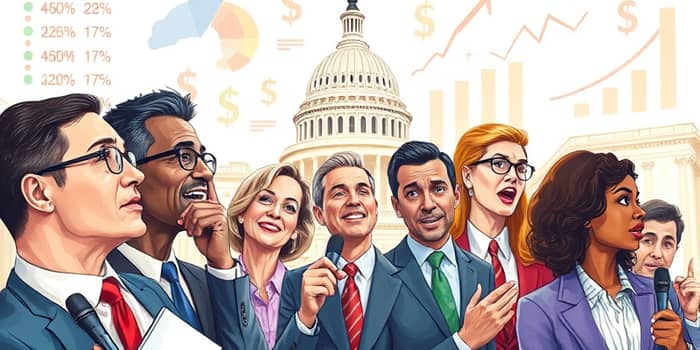
As Congress readies itself for a showdown over the fate of the 2017 Tax Cuts and Jobs Act, businesses and policymakers are engaged in a high-stakes debate. The outcome could reshape the economic landscape for years to come, affecting job creation, public finances, and the distribution of prosperity.
When lawmakers enacted the TCJA in 2017, they delivered a seismic shift in U.S. fiscal policy. By lowering the corporate tax rate to 21%, proponents argued that America would become more competitive on the global stage. Early projections estimated a net cost of $330 billion over ten years, after offsetting measures.
In practice, federal revenues from corporate taxes have averaged 1.39% of GDP annually from 2018 to 2024, below the pre-TCJA projection of 1.68%. While economic growth and investment did pick up, the projected gap in receipts has raised concern among deficit hawks.
The central questions in the upcoming debate are simple yet profound: how will the government fund essential services, and what risks accompany rising deficits? Opponents of extending the cuts warn of unaddressed debt, while supporters claim sustained growth will close the gap.
To clarify the numbers, consider this summary:
These figures underscore why the debate carries real consequences for federal budgets and long-term fiscal health.
Proponents of permanence highlight a 20% boost in domestic investment at affected firms and point to modest wage gains. Yet critics caution that benefits skew heavily to the top:
This uneven distribution fuels questions about equity and whether lower receipts truly translate into broad-based prosperity.
As individual and pass-through provisions near expiration at the end of 2025, small business owners face potential tax hikes up to 43%. With nearly 20 million proprietors at stake, industry groups lobby fiercely for extensions.
Key elements in current proposals include:
The tug-of-war between minimizing taxes and preserving revenues plays out in committee hearings and closed-door negotiations.
For business leaders and entrepreneurs, uncertainty can stall investment decisions and hiring plans. To prepare, stakeholders can:
By taking proactive measures, companies can manage risk and influence policy outcomes.
Striking the right balance between attracting investment and ensuring fair contributions from all economic actors remains a central challenge. International peers with lower rates have seen some firms shift profits overseas, while developing nations cry foul over profit-shifting loopholes.
Policymakers must weigh global tax competition against fiscal responsibility and consider mechanisms that protect both national interests and fairness between corporate giants and small enterprises.
The coming months will shape the U.S. tax landscape for a generation. While debates can grow heated, they also open an opportunity for creative compromise.
By combining targeted credits for innovation, safeguards for smaller businesses, and measured revenue enhancements, Congress can craft a package that:
Whether compromise emerges or gridlock prevails, the decisions policymakers make will ripple through boardrooms, shop floors, and household budgets nationwide. Stakeholders on every side have a vital role to play: through informed dialogue, strategic advocacy, and a shared commitment to balanced growth, it is possible to forge a tax system that promotes both prosperity and fairness.
References













